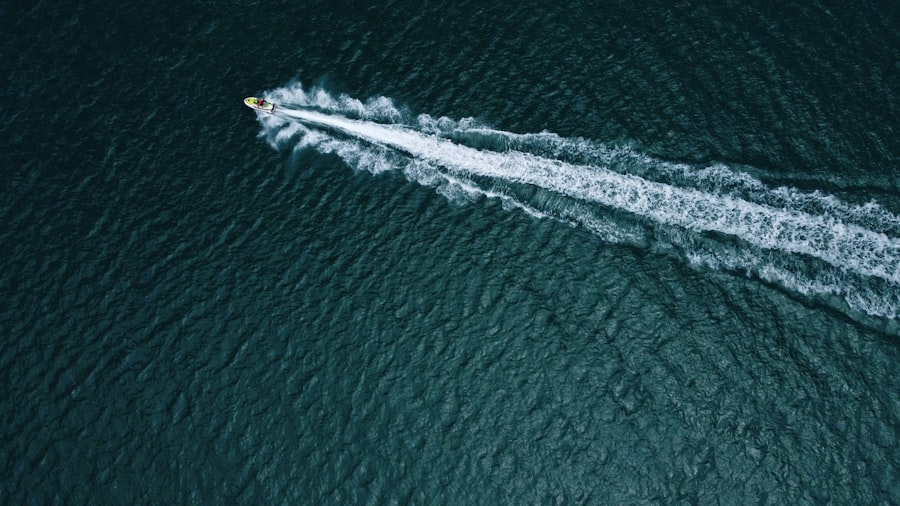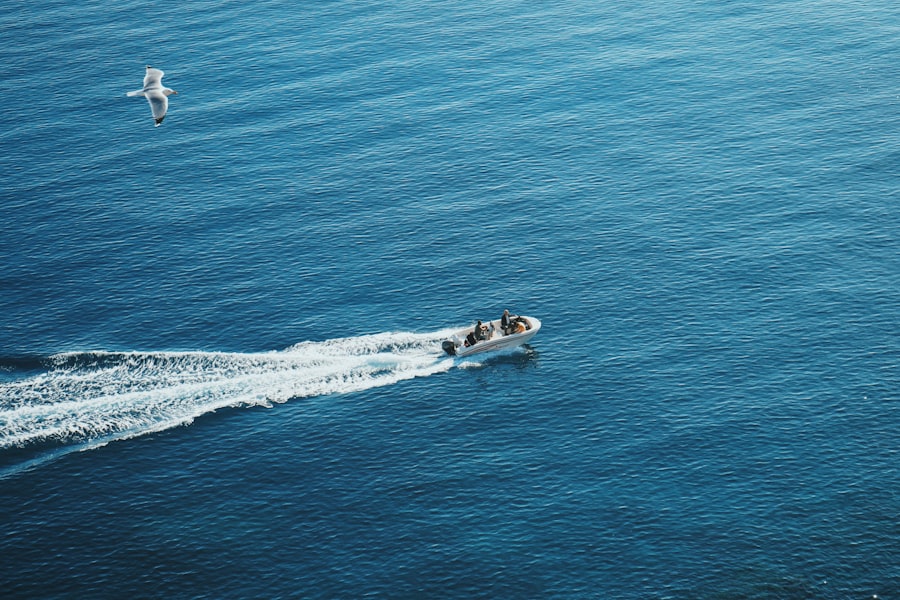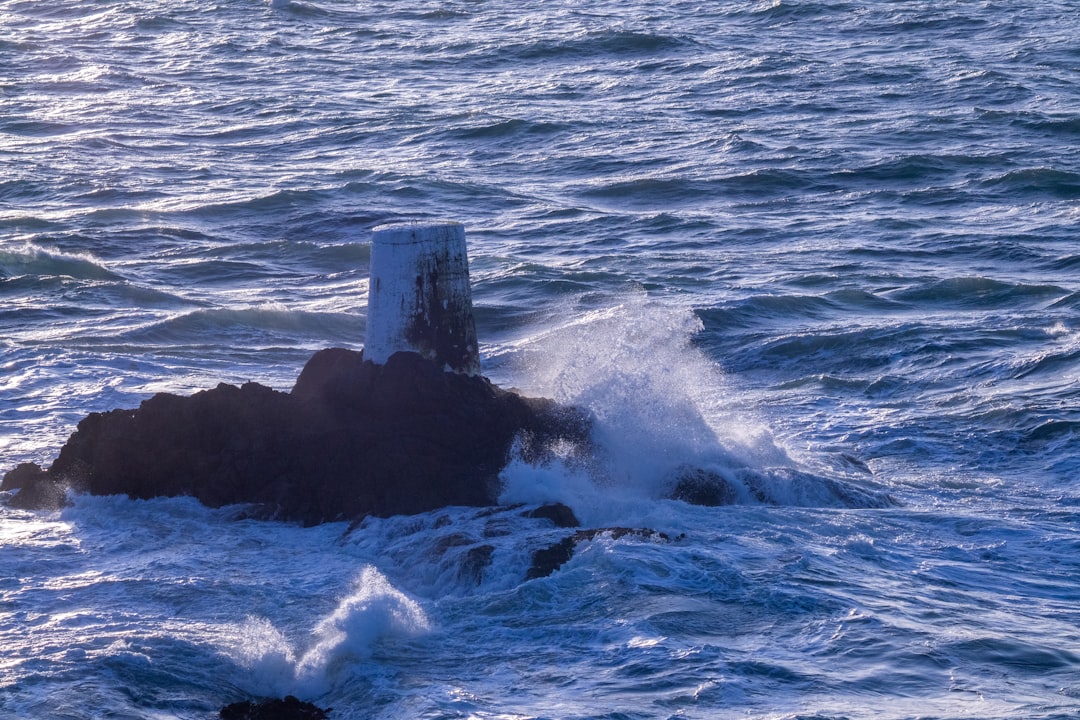The oceans cover more than 70% of the Earth’s surface, serving as a vital resource for humanity and a critical component of the planet’s ecosystem. They are not only a source of food and livelihood for billions of people but also play a crucial role in regulating the climate and supporting biodiversity. Understanding the importance of ocean defense is essential, as the health of the oceans directly impacts global stability, economic prosperity, and environmental sustainability.
The degradation of marine environments due to pollution, overfishing, and climate change poses significant threats that necessitate robust defense strategies. Moreover, the oceans are increasingly becoming arenas for geopolitical tensions, with nations vying for control over maritime resources and trade routes. This competition underscores the need for effective ocean defense mechanisms that can safeguard national interests while promoting global cooperation.
The importance of ocean defense extends beyond mere territorial claims; it encompasses the protection of marine ecosystems, the enforcement of international laws, and the promotion of sustainable practices that ensure the long-term health of oceanic resources.
Key Takeaways
- The ocean plays a crucial role in sustaining life on Earth and it is important to prioritize its defense and protection.
- Military defense is essential in safeguarding the oceans from potential threats and ensuring maritime security.
- Technology such as satellite surveillance and underwater drones are valuable tools for monitoring and safeguarding the oceans.
- International cooperation is vital for effective ocean defense, as many ocean-related issues are transboundary in nature.
- Illegal fishing and maritime crimes pose significant threats to ocean health and must be addressed through coordinated efforts.
The Role of Military Defense in Protecting the Oceans
Military defense plays a pivotal role in safeguarding the oceans from various threats, including piracy, smuggling, and illegal fishing. Naval forces are often deployed to patrol vast maritime areas, ensuring that international waters remain safe for legitimate trade and navigation. The presence of military assets can deter unlawful activities and provide a rapid response to emerging threats, thereby maintaining order in these critical regions.
Furthermore, military operations can support humanitarian missions, such as disaster relief efforts following natural calamities that impact coastal communities. In addition to traditional defense roles, military organizations are increasingly involved in environmental protection initiatives. They conduct surveillance operations to monitor illegal dumping and pollution incidents that threaten marine ecosystems.
By leveraging their resources and expertise, military forces can collaborate with civilian agencies to enhance ocean governance and promote sustainable practices. This multifaceted approach to ocean defense highlights the necessity of integrating military capabilities with environmental stewardship to address the complex challenges facing the world’s oceans.
Utilizing Technology for Ocean Surveillance and Protection

Advancements in technology have revolutionized ocean surveillance and protection efforts. Satellite imagery, drones, and underwater robotics are now integral tools for monitoring marine environments and detecting illegal activities. These technologies enable real-time data collection and analysis, allowing authorities to respond swiftly to emerging threats such as illegal fishing or oil spills.
The ability to track vessels through Automatic Identification Systems (AIS) has significantly improved maritime domain awareness, facilitating better enforcement of laws and regulations. Moreover, innovative technologies such as artificial intelligence and machine learning are being employed to analyze vast amounts of ocean data. These tools can identify patterns in fishing activities, predict potential illegal actions, and assess the health of marine ecosystems.
By harnessing these technological advancements, stakeholders can enhance their capacity to protect the oceans while promoting sustainable resource management. The integration of technology into ocean defense strategies not only improves efficiency but also fosters collaboration among various entities working towards common goals.
The Importance of International Cooperation in Ocean Defense
| Metrics | Data |
|---|---|
| Marine Pollution | 8 million metric tons of plastic waste enter the ocean annually |
| Illegal Fishing | Estimated to cost the global economy 23.5 billion annually |
| Climate Change | Ocean absorbs 30% of CO2 produced by human activities, leading to ocean acidification |
| Marine Biodiversity | Over 90% of the world’s fisheries are fully exploited or overexploited |
The oceans are inherently global commons, transcending national boundaries and requiring collective action for effective defense. International cooperation is paramount in addressing transnational challenges such as piracy, human trafficking, and environmental degradation. Treaties and agreements like the United Nations Convention on the Law of the Sea (UNCLOS) provide frameworks for nations to collaborate on ocean governance and resource management.
These legal instruments establish guidelines for maritime boundaries, resource allocation, and environmental protection, fostering a sense of shared responsibility among nations. Furthermore, joint exercises and collaborative initiatives among navies and coast guards enhance interoperability and strengthen relationships between countries. Such partnerships not only improve operational capabilities but also build trust and understanding among nations with diverse interests.
By working together, countries can share best practices, pool resources, and develop comprehensive strategies to address the myriad challenges facing the oceans today. International cooperation is not merely beneficial; it is essential for ensuring the long-term sustainability and security of marine environments.
Addressing Illegal Fishing and Maritime Crimes
Illegal fishing remains one of the most pressing issues threatening ocean health and sustainability.
Addressing this challenge requires a multifaceted approach that combines enforcement measures with community engagement and education.
Governments must invest in robust monitoring systems to detect illegal activities while also strengthening penalties for offenders. Collaborative efforts with local fishing communities can foster a sense of stewardship over marine resources, encouraging sustainable practices that benefit both people and ecosystems. Maritime crimes extend beyond illegal fishing; they encompass a range of illicit activities such as drug trafficking, human smuggling, and piracy.
These crimes pose significant risks to maritime security and economic stability. To combat these threats effectively, nations must enhance their law enforcement capabilities through training programs and resource sharing. Additionally, fostering partnerships with international organizations can facilitate information exchange and coordination in addressing maritime crimes on a global scale.
Protecting Marine Biodiversity and Ecosystems

Marine biodiversity is essential for maintaining healthy ocean ecosystems that provide numerous services to humanity. The loss of biodiversity due to habitat destruction, pollution, and climate change poses significant risks not only to marine life but also to human well-being. Protecting marine biodiversity requires comprehensive strategies that encompass habitat conservation, restoration efforts, and sustainable resource management practices.
Marine protected areas (MPAs) have emerged as effective tools for safeguarding critical habitats while allowing for sustainable use of resources. In addition to establishing MPAs, stakeholders must prioritize research and monitoring initiatives to better understand marine ecosystems’ dynamics. This knowledge is crucial for developing informed policies that promote biodiversity conservation while balancing economic interests.
Engaging local communities in conservation efforts can also enhance the effectiveness of these initiatives by fostering a sense of ownership over marine resources. Ultimately, protecting marine biodiversity is not just an environmental imperative; it is essential for ensuring food security, economic resilience, and overall planetary health.
Sustainable Management and Conservation of Ocean Resources
Sustainable management of ocean resources is vital for ensuring their availability for future generations while minimizing environmental impacts. This approach involves balancing economic development with ecological integrity by implementing practices that promote responsible use of marine resources. Fisheries management is a prime example where sustainable practices can be adopted to prevent overfishing while supporting local economies.
By setting catch limits based on scientific assessments and promoting selective fishing methods, stakeholders can ensure the long-term viability of fish stocks. Conservation efforts must also extend to other ocean resources such as minerals, oil, and gas. As demand for these resources continues to grow, it is imperative to adopt sustainable extraction practices that minimize environmental degradation.
This includes conducting thorough environmental impact assessments before initiating projects and implementing measures to mitigate potential harm to marine ecosystems. By prioritizing sustainable management practices across all sectors that utilize ocean resources, stakeholders can contribute to a healthier planet while supporting economic growth.
Balancing Economic Development with Environmental Protection
The challenge of balancing economic development with environmental protection is particularly pronounced in coastal regions where livelihoods depend on marine resources. While economic growth is essential for improving living standards, it should not come at the expense of environmental degradation. Policymakers must adopt integrated approaches that consider both economic objectives and ecological sustainability when planning development projects.
This includes engaging stakeholders from various sectors—fishing communities, tourism operators, conservationists—to ensure that diverse perspectives are considered in decision-making processes. Moreover, promoting sustainable tourism can serve as a model for balancing economic interests with environmental stewardship. By encouraging eco-friendly practices within the tourism industry—such as responsible wildlife viewing or sustainable fishing—communities can benefit economically while preserving their natural heritage.
Education plays a crucial role in this process; raising awareness about the importance of protecting marine environments can inspire individuals to make choices that support both their livelihoods and the health of the oceans.
Community Engagement and Education for Ocean Defense
Community engagement is a cornerstone of effective ocean defense strategies. Local communities often possess invaluable knowledge about their marine environments and can play a critical role in conservation efforts. By involving community members in decision-making processes related to ocean management, stakeholders can foster a sense of ownership over marine resources that encourages sustainable practices.
Initiatives such as citizen science programs allow individuals to contribute data collection efforts while enhancing their understanding of marine ecosystems. Education is equally important in promoting ocean defense efforts. Raising awareness about the significance of healthy oceans—both for biodiversity and human well-being—can inspire individuals to take action in their communities.
Schools can incorporate marine education into their curricula, fostering a generation that values environmental stewardship from an early age. Workshops, outreach programs, and public campaigns can further engage diverse audiences in discussions about ocean conservation challenges and solutions.
The Role of Non-governmental Organizations in Ocean Conservation
Non-governmental organizations (NGOs) play a vital role in advocating for ocean conservation and influencing policy decisions at local, national, and international levels. These organizations often serve as watchdogs, holding governments accountable for their commitments to protect marine environments while raising awareness about pressing issues such as climate change and pollution. Through research initiatives, advocacy campaigns, and community engagement programs, NGOs contribute significantly to advancing ocean defense efforts.
For instance, NGOs often have established networks within local communities that facilitate outreach efforts while providing valuable insights into local needs and challenges. By working together towards common goals—such as establishing marine protected areas or combating illegal fishing—NGOs can amplify their impact on ocean conservation efforts.
The Future of Ocean Defense: Challenges and Opportunities
The future of ocean defense presents both challenges and opportunities as humanity grapples with an array of complex issues affecting marine environments. Climate change remains one of the most significant threats facing oceans today; rising temperatures lead to coral bleaching events while altering species distributions across ecosystems. Addressing these challenges requires innovative solutions that integrate scientific research with policy development aimed at mitigating climate impacts on marine environments.
However, alongside these challenges lie opportunities for progress through collaboration among diverse stakeholders—governments, NGOs, businesses—and advancements in technology that enhance monitoring capabilities. As awareness about ocean health continues to grow globally, there is potential for increased investment in sustainable practices that prioritize ecological integrity alongside economic development goals. In conclusion, effective ocean defense necessitates a multifaceted approach that encompasses military involvement, technological innovation, international cooperation, community engagement, education initiatives—and more—to address pressing challenges facing our oceans today while seizing opportunities for sustainable management moving forward into an uncertain future ahead.
The two ocean defense strategy, which emphasizes the importance of maintaining naval dominance across both the Atlantic and Pacific Oceans, is a critical component of national security. This approach ensures that a nation can effectively respond to threats and maintain open sea lanes for trade and military operations. A related article that delves into the strategic implications of this defense strategy can be found on MyGeoQuest. This article provides an in-depth analysis of how geopolitical shifts and technological advancements are influencing naval strategies worldwide. For more insights, you can read the full article by visiting MyGeoQuest.
WATCH THIS! The Hidden Reason No One Can Invade America | A Geographical Analysis
FAQs
What is the two ocean defense strategy?
The two ocean defense strategy is a military concept that involves the United States maintaining the capability to defend both the Atlantic and Pacific Oceans simultaneously.
Why is the two ocean defense strategy important?
The strategy is important because it allows the United States to protect its interests and allies in both the Atlantic and Pacific regions, which are critical to global security and stability.
How does the two ocean defense strategy impact military planning?
The strategy impacts military planning by requiring the United States to maintain a strong naval presence in both the Atlantic and Pacific Oceans, as well as the ability to project power and respond to threats in both regions.
What are the key components of the two ocean defense strategy?
Key components of the strategy include a robust naval force, forward-deployed military assets, strategic alliances with partner nations, and the ability to conduct joint military operations across both oceans.
Has the two ocean defense strategy been tested in real-world scenarios?
Yes, the strategy has been tested in real-world scenarios, including during major conflicts such as World War II and the Cold War. It continues to inform U.S. military planning and operations today.
